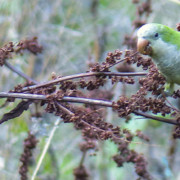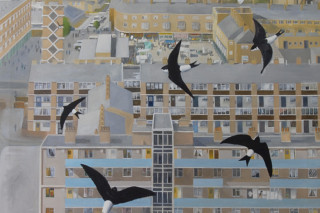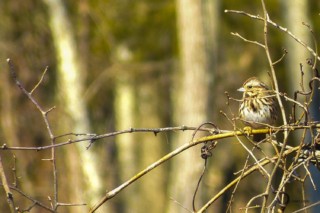Delhi is a huge city with a population of over 14 million people. As a birding venue the city has a remarkable number of interesting sites. In spite of the population density, there is a surprising number of green open spaces. Apart from resident species Delhi has a number of interesting summer visitors that move north out of the peninsula to breed before and during the summer monsoon. More striking is the number of winter visitors and passage migrants, for Delhi is well positioned on the north-south flowing Yamuna, on one of the major Asian flyways.
For birding in Delhi itself we strongly recommend you use the latest edition of the Eicher City Map to find your way around. If you are in Delhi on a Sunday check out www.delhibird.net by the previous Friday and you may find the active delhibird group is meeting somewhere.
Yamuna River in Delhi
Undoubtedly both banks of the Yamuna and its associated wetlands are the most productive places with a bird list of over 330 species. During peak periods over 150 species in a day is possible. The area is famous for its huge duck and goose flocks with up to 20,000 of 20 species regularly included Bar-headed and Greylag Geese, Ruddy and Common Shelduck, Ferruginous Duck and Red-crested Pochard. There is a huge roosting winter gull flock of up to 10,000 birds that is dominated by Black and Brown-headed Gulls but usually with a few Pallas’s, Steppe and Caspian Gulls.
In addition, a wide range of wetland species including most of India’s herons and egrets and many migrant wader species should be seen. The winter roosts of hirundines, wagtails, mynahs and starlings probably exceed 100,000 and present a wonderful spectacle at dusk especially if they are being harried by falcons or Marsh Harriers.
As the Yamuna is a major migration flyway almost any migratory species could turn up; the rarity list grows annually with Baer’s Pochard, Upland Buzzard and Horned Lark being recent additions.
The area is good for wintering and passage passerines including Common Starling, several warbler species (including Moustached), Bluethroat, Rosy Pipit, Citrine Wagtail and Common Rosefinch. In summer the exposed sandbanks attract terns occasionally including the endangered Black-bellied Tern and the Indian Skimmer, two species of pratincole, plovers including River Lapwing and thick-knees including the occasional Great Thick-knee. The reed beds are alive with nesting Cinnamon, Yellow, and a few Black Bitterns. Indeed, this is probably the best site in India to get reasonably close views of these three species in numbers. Both Indian species of jacana also breed together with Painted Snipe and Watercock. Specialities include Greater Flamingo whose now regular flock is upwards of 1000, Black Ibis on the marginal vegetable fields and open reedbeds, resident but elusive Red-headed Falcons and reedbed nesting Black Francolin, White-tailed Stonechat, Striated Babbler and Grassbird. Red Avadavat, Black-breasted and Streaked Weavers and Yellow-bellied Prinia are also present. Breeding Bristled Grassbird and wintering White-capped Penduline Tit have been recorded in recent years.
Khader area, Delhi
This area is the southern extension of the west bank of the Yamuna south of the barrage. The bird list is similar, although numbers are generally lower, but there are more reliable wader sites and the cultivated fields add a new dimension. Black Ibises are almost guaranteed and dry land species such as Sand, Crested and Oriental Skylarks breed while Hume’s Short-toed Lark winters.
Tughlaqabad-Asola, Delhi
This historic area of south Delhi is rich in dry country species. Much of it is thorn scrub and trees on undulating rocky hills and almost anywhere is worth a look. Characteristic birds include Black-shouldered Kite, Jungle Bush-quail, Indian Bush Lark, Indian Robin, Large Grey Babbler and Long-billed Pipit as well as up to four species of shrike.
Asola is the best site in Delhi for the local, although common, Rufous-fronted Prinia and often has the difficult -to-locate Sirkeer Malkoha. Wintering warblers include Orphean, Sulphur-bellied and both Common and Hume’s Lesser Whitethroats as well as the ubiquitous Hume’s Warbler. Painted and Chestnut-bellied Sandgrouse are still around in small numbers – look out for parties flighting to water around 0930 am – and birds of prey in winter could include almost anything.
The waste field just south of the main fort is the most reliable site in Delhi for the declining Yellow-wattled Lapwing and up to 12 pairs breed there. It is also good for larks and pipits including Tawny and Blyth’s and sometimes has a few wheatears like Isabelline, Desert or Varied as they are the most likely species.
Tughlaqabad is on the west-east Mehrauli-Badarpur Road and well marked on all maps. The field, which can be driven into, is between the Adilabad Fort ruins – where you can look for Blue Rock Thrush, Rock Eagle Owl and Common Kestrel and even Wallcreeper have been recorded in some winters – and Ghiyauddin Tughlaq’s Tomb. A road by this tomb to Surajkund takes you to the entrance to Asola Wildlife Reserve, about 2 kms down on your right. There is no entrance charge and the best thing to do is park inside the gate and walk round on the numerous paths. Unfortunately it doesn’t open until 0830 hrs – although there is a resident watch-person who will probably let you in earlier with the right encouragement!
Delhi Ridge
This famous area, studied intensively by Tony Gaston 30 years ago, is now rather fragmented and degraded in parts. But what remains is in theory protected and still holds some interesting birds. It is a combination of thick thorn scrub and rocks, which is less open than Asola, and patches of woodland.
Most of Delhi’s land birds can be found here with effort and it can be excellent for overhead raptors including the few remaining vultures, Booted Eagle and breeding Oriental Honey Buzzard. More local species include Grey-breasted Prinia, Small Minivet, Common Wood-shrike, Paradise Flycatcher plus barbets and woodpeckers. In winter Olive-backed Pipits are regular in several places and several buntings notably White-capped Bunting have been recorded. This is one of the few sites in India where the enigmatic Brook’s Leaf Warbler is regularly reported, usually in the high canopies and the Sirkeer Malkoha is present in the thorn scrub. Peafowl and Grey Francolin are numerous and Eurasian Stone Curlew breed in good numbers. Look out for Yellow-wattled Lapwing and Long-billed Pipit on the Polo Ground. The Central Ridge is the last known site in Delhi for the very local and apparently rapidly declining Marshall’s Iora but it hasn’t been seen or heard there for over 20 years. There are also occasional records of Orange-headed Thrush and Indian Pitta passing through.
The easiest way to access this area is by the first road on your left off Willingdon Crescent and soon after the Sardar Patel Road junction by the Gandhi Murti. Drive or better walk straight through to the Polo Clubhouse. You can park there and after checking the field take one of the paths into the jungle. The best is right at the end of the Polo Ground that leads to mature Ridge woodland and usually deeply littered with stable straw. Watch out for polo horses exercising at speed! The up hill tracks take you to the Buddha Jayanti Smarak Park which is also worth a visit and another way in from Vandemataram Marg but the fence has few gaps in it.
Another option is in the southern part of the Ridge, the Sanjay Van Park, which lies south of IIT to the south of the Qutab Institutional Area. Take Tara Crescent Road off the New Mehrauli Road and just past the new DFIDI (old USAID) office you’ll see a gate. Excellent footpaths take you through a range of habitats including small lakes along the dammed stream where it is worth sitting for a while. Time here may result in Bluethroat and rarer species emerging from the bushes along the water and crakes in the reed edges. 70 species in two hours is well possible in winter here.
Delhi Parks
Delhi is full of parks of all sizes and they are easily located on most maps. Some in the centre, such as the Lodi Gardens, are well manicured but contain many old indigenous trees. Pay particular attention to Peepul, Banyan and Neem trees for Yellow-footed Green Pigeon, three species of parakeet and both Coppersmith and Brown-headed Barbets.
These parks as well as large gardens and hotel grounds are usually rich in birds. As indeed are almost all the environs of the ancient monuments, big institutions, the Delhi Golf Course, if you can gain access, and the riverside ghats. Such places are a good to wander in, to see the commoner north Indian species often at close quarters. Most older buildings have Dusky Crag Martin, Brown Rock Chat and nesting parakeets, Feral Pigeons, mynahs and Wallcreeper have wintered on some of them.
During spring passage almost anything can turn up but look out especially for the large flocks of Rosy Starling, Common Rosefinch on fruiting mulberry trees and Sulphur-bellied and Western Crowned Warblers. The large Deer Park Hauz Khas and the nearby Siri Fort Park are both historically significant and ornithologically interesting because there is still fairly wild vegetative cover. In winter several species of warbler and birds of prey can be found. To find the parks take Aurobindo Marg south from the Inner Ring Road and they are both located close to the Outer Ring Road.
Delhi Zoo
Most city zoos are well worth a visit and Delhi’s is no exception. In the monsoon a significant colony of wild egrets, cormorants and ibis nests in trees on islands in the Stone Curlew breed in several enclosures, the Nilgai one appropriately being the most popular. In winter Common Chiffchaff, Lesser Whitethroat, Hume’s Warbler, Bluethroat and Olive-backed Pipit are usually easy to find. Blyth’s Reed and Greenish are numerous on passage as they are anywhere with trees in Delhi. Next door is the Sundar Nursery, renowned in the past for migrants.
The Zoo is between the Mathura Road and the Ring Road south of Purana Quila and east of the Golf Course. It is closed on Fridays.
Adapted from “Where to Watch Birds in World Cities” by Paul Milne, published by Christopher Helm, London 2006.
“The Atlas of the Birds of Delhi and Haryana” can be ordered through the Oriental Bird Club. Visit Oriental Bird Club and follow the guidance for sales.
Paul Milne



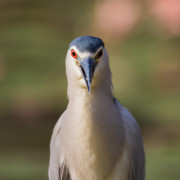

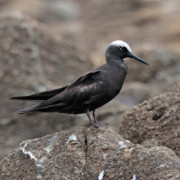
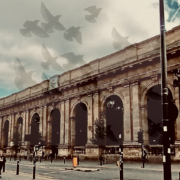 © Ruth Chambers
© Ruth Chambers 